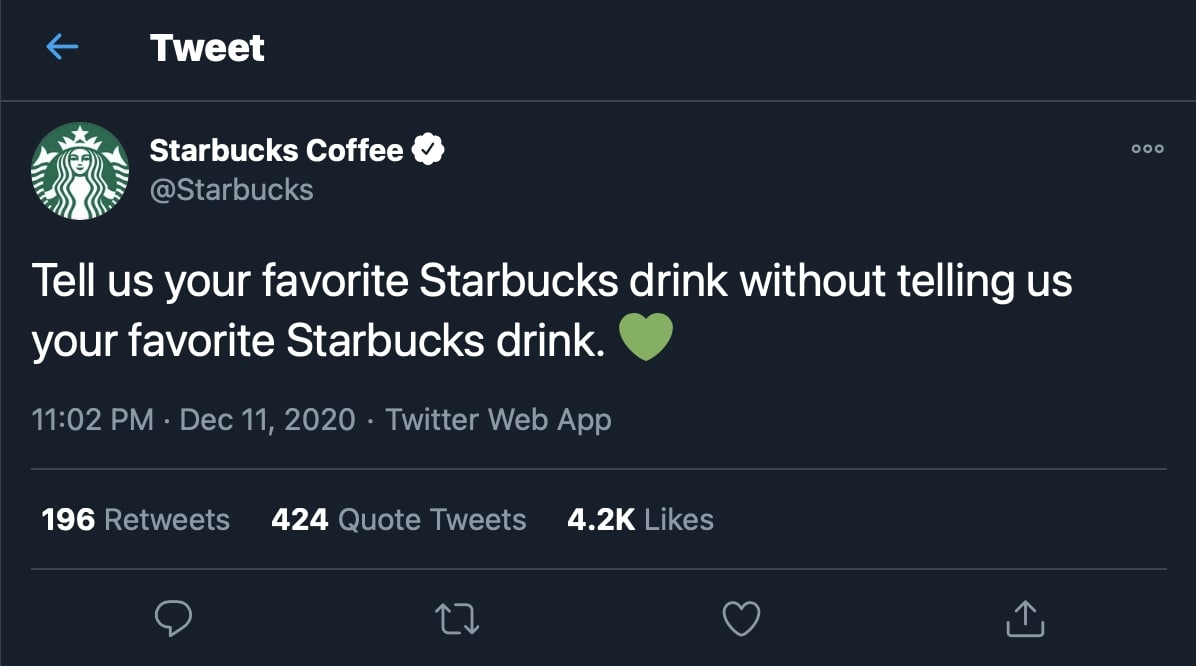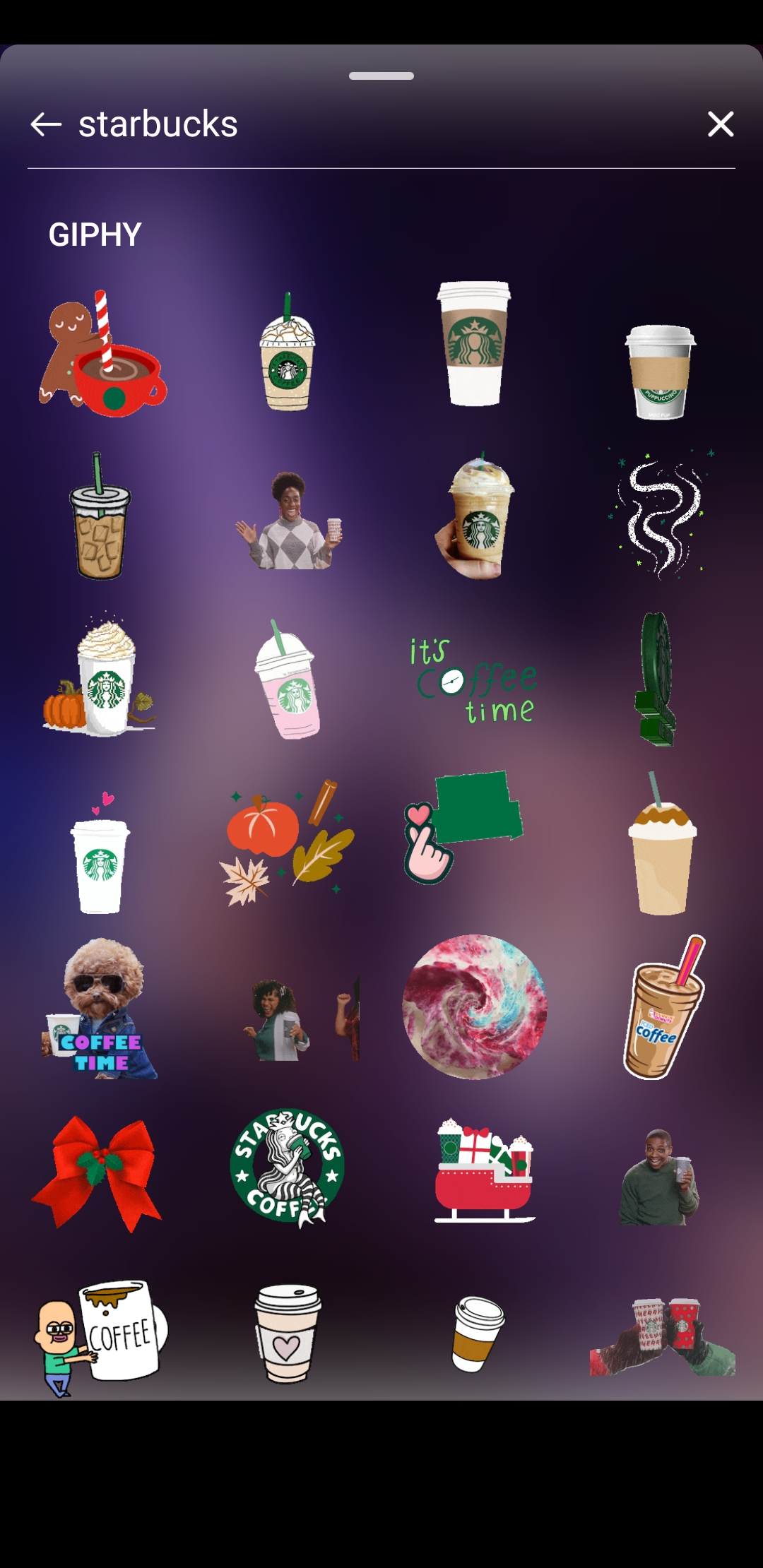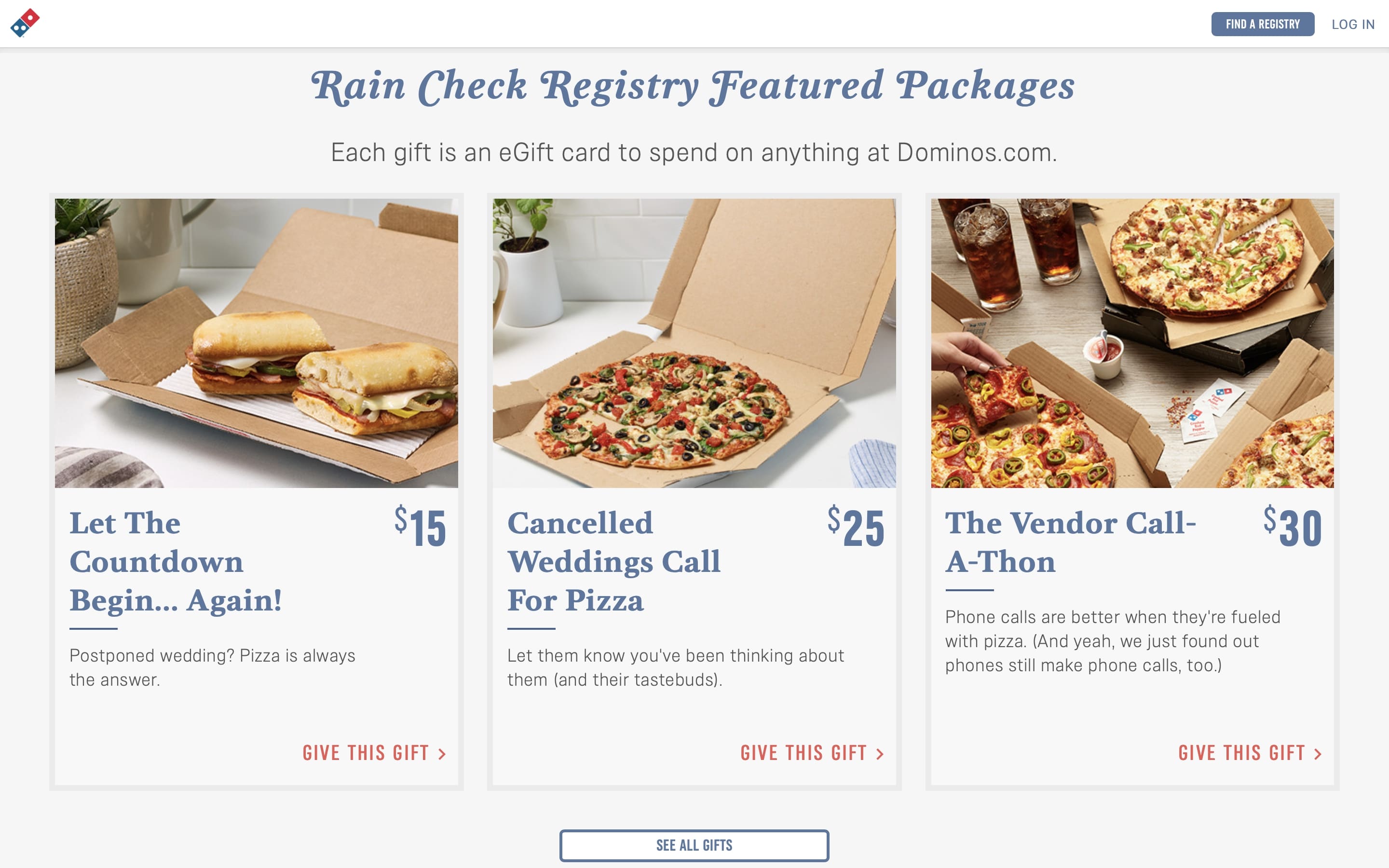What is Relationship Marketing? Types, Benefits, Examples!
It is not an exaggeration to say you can reach out to anyone on Earth, whether it is an old Facebook pal, an Instagram star, or a former LinkedIn colleague. It is your connection, but a connection is not a relationship. They are two separate terms. A connection is just a “click” away, whereas it takes willingness and room as well as time for a connection to develop. Although being able to communicate with everyone has its advantages, it has bred an impatience culture. When we interact, we expect immediate outcomes, rather than allowing a relationship to flourish.
So, what does it mean for your business? When starting, you may be really eager to get a vast number of customers, and sometimes forget you have to retain them. According to Emmett C. Murphy and Mark A. Murphy, business authors, it will cost five times as much to attract a new customer to maintain a current client. A 2 percent rise in customer retention, according to the same writers, will decrease expenses by as much as 10 percent for a business. No business can grow, let alone thrive, if they are not continually adding loyal customers to their customer base.
Many companies separate the two tasks and allocate different marketing departments to working on one or the other. New customers are regarded as transactional because the goal is to motivate them to spend their money while existing customers need different strategies. And that’s where relationship marketing kicks in. Businesses will need a relationship marketing strategy to keep people buying from them. While both new and existing customers must be noticed and valued, the goal, ultimately, is to turn every one-time customer into a loyal customer.
What is relationship marketing?
Relationship marketing is a marketing strategy that revolves around nurturing deeper, stronger customer relationships to help ensure customer satisfaction and brand loyalty. Relationship marketing is not about short-term wins, or sales gained, but about pleasing customers in the long-term.
Relationship marketing is different from most typical commercial practices focusing solely on sales: watch advertisement A and purchase product B. A one-off sale is fine, but Relationship marketing goes beyond that by promoting customer loyalty and providing services or products with added value.
With that in mind, relationship marketing is not about a single product. A company needs to optimize the way they do business in order to increase the value of that relationship with the customer. In the short term, it is of importance that customers buy something. However, the priority should be on keeping these same customers buying your products (customer retention) in the long term. Repeated purchases only happen when customers find using your service happy.

Relationship Marketing primarily entails enhancing internal processes. Many customers abandon a business not because they didn’t like the commodity but because the customer service irritated them. When an organization streamlines its internal processes to meet more of its customers’ support demands, consumers would be happy even if their product malfunctions.
In relationship marketing, technology also plays a significant role. The Internet has made it easy for businesses to track, archive, interpret, and then take advantage of that vast amount of client information to create targeted content, deep discounts, and exclusive service as a form of gratitude for their loyalty.
Technologies such as ‘site tracking’ (which pages the visitors have accessed and for how long) and targeted content (target group-oriented data) enable companies to predict the customers’ stage in the buying journey. Utilizing this information, companies can generate automated email campaigns with exclusive offers to the customer.

Social media sites also allow businessesss to interact with their customers intimately and persistently. It might have been impractical in the past to keep track of every detail of any single customer. Still, nowadays, technology has made it easier for corporations to simplify their do so.
The final part of relationship marketing is branding. An organization can form a long-term relationship with a customer if that customer thinks the brand that they buy products from represents who they are or who they seek to be. If a consumer is content with the brand they uses, they make not only frequent purchases but also share optimistic messages with their social circles.
Some key pieces of relationship marketing.
There are several components that lay the foundation of Relationship Marketing, including customer service, CRM, content marketing, loyalty programs, etc. It is advised that businesses work closely with the so-called ‘buyer personas’ to use these components efficiently. These are predetermined profiles of consumers that closely match the particular target market, giving advanced insight into the demands of customers.
1. Customer Service
Customer service is of the essence and must be an important part of both marketing and sales. Relationship Marketing stresses a continual investment in the service department, built to support the customers and address their questions. Relationship marketing focuses mainly on strengthening internal company processes. Customers will not be returning to your company if they do not feel like your service is worth their hard-earned pennies. If a business streamlines its internal operations and fulfills all customers’ needs, it will be easier for them to establish a long-term relationship with the customers.

But before all of that, you need an excellent customer service team. Anyone who has a role in the customer experience – whether they are on the phone, in person, or on social media — should be thoroughly trained on customer communications.
Ask yourselves these questions?
- What are the interactions’ goals?
- What solutions can customer service staffs offer to the customer’s problems?
- What other strategies should they use to promote brand loyalty and encourage customers to buy again?
2. Customer Relationship Management.
CRM is a network that connects various divisions, from marketing to advertising departments to customer service, and organizes their reports, processes, and metrics into one unified structure. Each user of CRM can easily access the real-time customer data they want. CRM not only improves the quality of teamwork across teams and agencies but also enables organizations to offer something unique to their customers: personalized one-to-one customer journeys. To supercharge your CRM benefits, integrate it with the email marketing platforms, social media platforms, or VoIP phone systems that you are using. This strategic fusion ensures a streamlined and highly effective Relationship Marketing strategy, allowing you to engage customers across multiple channels and deliver tailored experiences for lasting success.
Many small businesses operate by managing customer details through sticky notes or manual spreadsheets. However, as we all know, manual procedures are getting more and more cumbersome and resulted in wasted resources, potentially costing you both customers and sales.
This is where CRM software comes in. CRM software helps keep everyone on the same page, putting together marketing, sales, and customer service with all the knowledge they need to excel in their positions. The price of CRM software varies so you can opt to go with one that suits the budget of your company.
Thirty-nine percent of organizations who have used CRM systems regard the data obtained as a strategic tool or a competitive advantage. Most enterprises witness a significant rise in traffic, sales income, and customer satisfaction using a CRM system.
Check out: Top 15 Best CRM for Small Business
3. Loyalty Programs.
Building loyalty is the aim of relationship marketing. You, as a company owner or marketer, ought to build loyalty among your current customer base, so they keep returning, spend more money on your business and share great reviews with their social circles, empowering them also to become customers.
One approach to doing this is through loyalty programs. You can use an app reminding your customers that they can get a free coffee or snack for every ten transactions. However, the optimal loyalty program should be about giving customers value each time they spring by your stores. Target’s REDcard perfectly exemplifies this situation. According to Target’s website, the REDcard gives customers five percent off sales both in-store and online, more exclusive goods and gifts than ordinary customers, free delivery, and an extra 30 days for returns and changes.
By giving extra value to your loyal customers, you have already ensured that they will be coming back for you, which more than makes up for any money lost on maintaining the loyalty programs.
4. A sense of unity / lifestyle.
Consumers are now knowledgeable. Many people go as far as taking the time to do their research so that they know they are spending their money on the right product. They search for reviews, forums, sites on social media, journals, etc. What they are doing is seeking out a community to fully understand the ins and outs of a product or a brand. As a marketer, you may need to foster that community.
Your clients all share at least one thing in common. They like your brand, but they probably still share other products that are similar to what your business provides. Gathering all of your customers and future customers under one platform would enable them to chat about common interests and your brand.

Also, you may want to instill in your customers a sense of a new lifestyle. Think of brands like REI and their deep roots in the outdoor culture. For certain people, these brands are not just shops; they are a lifestyle. REI engaged in charitable work, exploiting the passions of their customers. Consumers, in exchange, realize that they not only buy things from these brands, but they are also investing in items that are meaningful to them and their lifestyle.
5. Content Marketing.
Content translates to any information about the products, discounts, ads, etc. This data must be of benefit to the target audience and provide further assistance in the buying process. Content Marketing can mean businesses offering free commodities on their website or newsletter. These complementary products would establish strong customer relationships in the long run, making sure that visitors will eventually spend money on you.
6. A detailed customer-facing presence.
Nowadays, customers have multiple ways to contact a brand. They can call using phones, pop by the store, talk to a chatbot, send an email to the customer service team, fill in a form, or simply tweet that brand a question.
In this digitalized world, everyone wants an immediate answer to their problems. In-store support alone is not enough; customers sometimes just don’t want to walk all the way to your store to address what is bothering them. That is why you need a live chat section to allow customers to contact you in real-time. If they need anything, all they need to do is simply log onto the website or your fan page and use the chatbox. Live chat, therefore, reduces frustration and shows people their opinions are valued. It also boosts sales, creates an impression that your company is proactive, improves satisfaction, and reduces costs.
If you want to accommodate every customer regardless of when or how they contact you, you need to make sure you have covered each facet of the social networking sites.
- Is there anyone always supervising your social media accounts?
- Are there devoted individuals answering customers’ emails?
You can never be too careful. So, make sure you have the tools needed to answer customer’s questions. For a successful customer relationship, simple, detailed, and polite answers are of the essence.
7. Social Media.
When it comes to relationship marketing, it is not overstating to say social media is one of your company’s most powerful tools. The aim is to provide potential customers with relevant content. Firms can also gain insight into their customer’s lifestyles by engaging with them on a regular basis. However, bear in mind that major platforms such as Google, Facebook, and Twitter are constantly updating their algorithms and therefore deciding what users will see on their newsfeed. Sadly, companies do not have control over this (unless you pay a huge amount of money)
8. Email Marketing
With email marketing, a company can have more control over what customers will and will not see. Therefore, it is an effective instrument for engaging target audiences. Don’t forget to convey the appropriate information to the right person and at the right time. Your email needs to provide useful knowledge, just as in social media. Otherwise, your emails will be flagged as spam, which could take a heavy toll on your credibility.
Examples of relationship marketing
Relationship Marketing can be of different types. For example:
- Provide excellent customer service, because customers who are continually impressed with a company’s customer service, are most likely to be faithful to the brand.
- Thank consumers through a social media post or with a mystery gift card.
- Gather customer feedback through questionnaires, polls, and phone calls, which can make the perception that customer thoughts are highly prized and help to create superior products and services.
- Give long-time or repeat customers promotions or incentives.
- Launch a loyalty program rewarding customers for their constant support.
- Host customer events to interact with customers and build a community.
- Create customer advocacy or brand advocacy programs to express gratitude who provide word-of-mouth marketing on a brand’s behalf.
Below are some examples to give you a more practical insight into Relationship Marketing.
1. Starbucks
Starbucks has reformed the way we enjoy a cup of coffee. This coffee chain is now a cultural icon and giant business.

One of the company’s relationships marketing strategy is sending frequent emails to their customers, keeping them in the know of promotions and new product launches. The giant coffee chain markets also constantly share customer content, such as short videos and images from their customers on Instagram to their social media, and even asks for suggestions from their customers on their web page. Reposting content generated by users on their social media accounts creates more interactions. Their tight-knit user community always queues up for the opportunity to purchase their new holiday-themed cup or specialty drink.

And have you checked out the Starbuck’s GIFs? The strategy is to get customers to share their experience with the brand.
2. Dominos.
In the past ten years, Domino’s has its fair share of risks for the sake of creativity and changes – such as a series of commercials called Pizza turnaround in 2009, in which they showed a series of poor customer reviews, read by actual Domino’s employees, before promising a fresh and updated recipe.
These self-disapproving commercials certainly went against the typical sales playbook, but it still seemed genuine to viewers. Domino’s re-invented the brand as straightforward and truthful by acknowledging their errors — and who doesn’t want to buy from a business like that?

Besides, other genius publicity initiatives such as the Domino’s wedding registry have been carried out by Domino’s, in which soon-to-get-married couples can create their pizza registry. Domino’s even did a great job of reaching into their digital audience — the organization also allowed customers to order pizza by sending only one basic pizza emoji or simply tweet with the hashtag #EASYORDER or @DOMINOS. Today, half of the sales of Domino’s are from digital platforms.

See, to build a loyal, long-term customer base, Domino has taken multiple strategies. By gradually and creatively re-inventing their goods and their identity and then interacting with their customers on their customer’s preferred new platforms, they embraced short-term losses for long-term gains.
3. Patagonia
Patagonia has established a brand name that reinforces its role as an eco-friendly and environmentally responsible organization. Their brand appeals to customers who value the use of renewable and recycled products. They have demonstrated it by convincing buyers to buy an used clothing rather than fresh Patagonia one. They have also provided customers outfit repairs from a mobile repair shop, repairing broken zippers and tears, and offers Do It Yourself (DIY) solutions — without charge.

Like-minded shoppers agree that Patagonia aims for a bigger goal than making a profit and are encouraged to endorse a company that expresses its values in a tangible manner.
4. Marriot.
A 35-minute film is not the most commonly-seen marketing strategy a hotel can use when it wishes to boost sales - and yet, that’s just what Marriott opted to do with their commercial film, “Two Bellmen Three”
This film helps Marriott cater to a younger audience and create brand recognition on youth-dominant channels like Snapchat and other influencer content such as “Snapisodes” that imitates TV travel documentaries. Best yet, their content doesn’t look like an advertisement and usually focuses on delivering enjoyable or useful information to the audience on different travel destinations.
5. General Electric (GE)
General Electric (GE) is a global conglomerate whose tagline is “building a world that works.” By portraying itself as an industry leader, thought pioneer, and renewable technology organization, GE has set it apart from conventional energy firms. As a global digital marketer, GE has centered on employee engagement and engaging narrative to create an identity.

Relationship marketing is essentially about providing both prospects and current customers relevant content — regardless of where they are in your buyer’s journey. Good relationship marketing can resonate as much to a random viewer as it does to your long-term customers to guarantee that your clients will thrive over the long-term with you.
Their GE Reports website, featuring podcasts, posts, videos, and infographics that help create good customer relationships, is an outstanding example of content marketing. Via curated content for differentiated audiences, they fulfill their purpose of educating their shareholders and empowering the public about different topics.
GE reflects its ability to please its long-term clients, even at the expense of short-term wins, by regularly delivering a wide variety of premium content.
6. Panera.
Panera launched a resolution in 2014, pledging its clients that by the end of 2016, it would eliminate all artificial flavors, sweeteners, and preservatives from its goods. The company remained accountable throughout the whole process, providing progress updates to show its customers a degree of integrity and openness.
Unquestionably, acknowledging they had historically used questionable ingredients in their products was a bold decision — but it had paid off hugely in 2016 when the company could legally claim “100 percent of our food is 100 percent clean”.

Today, through personalization, they begin to concentrate on cultivating strong relationships with customers. For example, they tell loyal customers about new food products they think would fit the “flavor profile”.
Panera exists wherever their customers are - 26% of Panera’s orders are made digitally . Panera also offers home and business delivery, pickup, and catering. The commitment to sustainable health and convenience has led to 28 million Panera loyalty members and 13 million email subscribers.
7. ArmorSuit.
The warranty policy of ArmorSuit starts with - “Most warranties are limited to 30 days or one year, but with our Lifetime Replacement Warranty, our customers can request for a replacement screen protector for a lifetime. This way, you never need to purchase a whole new kit when a replacement is needed.”
“You never need to purchase a whole new kit” is something you will never come across in conventional marketing strategy. The lifetime warranty of ArmorSuit reflects the firm’s steadfast devotion to making its clients satisfied. Though it might sound insane to give a lifetime warranty, it makes sense when establishing good relationships with customers of ArmorSuit — when buyers of the company seek any tech-related items, they will most likely first check out ArmorSuit’s website.
Benefits of relationship marketing
-
Higher customer lifetime value (CLV): Relationship marketing generates more committed buyers, which leads to repeat sales and a higher CLV. Moreover, dedicated clients are likely to become brand promoters or ambassadors, recommending products and services to colleagues, families, and business associates.
-
Decrease in spending on promotions and advertising: It can be costly to spend on promotions and ads to gain new clients. Relationship marketing allows customers to do the marketing for a brand in what’s called buzz marketing. Customers inform others about the products and services of a brand, which can boost brand recognition and sales. Brands, when they have outstanding relationship marketing systems, just need to invest little to no resources in advertisements
-
Stronger unity: Organizations that prioritize relationship marketing provide a greater organizational alignment around establishing an excellent customer experience. Various departments work together towards the same goal: to fulfill and satisfy customers.
How to create a relationship marketing strategy?
Relationship marketing can be in the form tactics like providing discounts, loyalty programs, tailored services, and upselling. But tactics are just … tactics, and they are ubiquitous these days.
Let’s go back a bit.
You need to connect with your clients to build the relationship, establish partnerships and emotions with which no price change, publicity strategy, or discount can compare. Relationship marketing helps you reach into the customers’ mind (and heart) by establishing: an intimate connection, a purpose-driven connection, and brand community.
Let’s take a delve deeper into each area.
1. Establish an Intimate Connection between you and your customers.
As you hear of customer engagement and evangelism, do the first brands that spring to your mind are Apple, Tesla, and Nike? It is not an exaggeration to say that these businesses have built a relationship so strong with their clients that their customers would fiercely protect it if anyone were to speak poorly or attack them.
People might say this kind of relationship doesn’t exist in B2B relationship. However, in reality, it does. B2B is indeed business-to-business, but after all, it is still a person (not a company) who visited your website, read your papers, and asked you for a test. These people also have emotions. And in order to construct an emotional connection, it is these people that you need to reach into. It is because the more a person feels connected to your brand, the more they will invest in you.

So, how can a marketing strategy build a more deeply emotional connection?
You need to develop faith, exhibit personality, inspire loyalty, and provide a better customer experience.
-
Develop faith: Faith plays an integral part in every partnership, so make sure that you deliver on your word at every step of your customers. Did you win awards for a product? Do your customers provide your services with 5-star reviews? Display them on your website if they indeed did. Don’t just say you are this and that to customers; demonstrate to them you are!
-
Exhibit personality: It’s time to tear down the firewall between you and your customers and let them know who you are, who the people behind your brand are. You may do so by uploading your workers’ pictures on social media or sharing stories about how you support the local environment in your email marketing. Take the audience with you every step of the way and encourage them to share their images or stories. A great way to create a stronger bond with the customers is to involve them in the discussion.
-
Inspire confidence. Are two individuals sign up for a trial of your service, are having the same experience? They’re supposed to. Does the experience vary depending on where a customer is? It should not. How about the contact strategy? It should also be consistent. Maintaining a cohesive identity in your industry inspires customers’ confidence, whether in your promotional ads, sales pitches, or on the website.
-
Provide a brilliant consumer service: With the advent of technology, what used to be “novel” is becoming “common.” A decent customer service isn’t enough anymore. You need to have an unforgettable, enjoyable, and emotional customer experience today.
You can try these simple marketing ideas:
- Use a CRM to stop “one size fits all” marketing strategies and show only relevant things to the audience.
- Make customized videos for customers: a product launch day when marking a new achievement, such as a 1st anniversary, etc.
- Ask your customers for feedback and improvement suggestions and let them know when you use their idea in your marketing campaign. In other words, let your customers be “co-creators” of your messaging.
2. Establish a meaningful purpose to be in business.
Providing value will only help strengthen the bond between you and your customers, whether in the form of content, tech functionality, or customer support.
But there is a different way to tap your consumers’ souls, and that is by having a purpose: An aim outside sales, gains, and the distribution of dividends.
In one of his famous Ted Talks, as Simon Sinek put it:
“And by “why” I don’t mean “to make a profit.” That’s a result. It’s always a result. By “why,” I mean: What’s your purpose? What’s your cause? What’s your belief? Why does your organization exist? Why do you get out of bed in the morning? And why should anyone care? As a result, the way we think, we act, the way we communicate is from the outside in, it’s obvious.”
A meaningful purpose has been so important that a study by Clutch showed that when deciding who to do business with, consumers consider purpose-driven qualities as more significant than price or value.

Customers today tend to do business with organizations that advocate for something good, whether it’s fundraising, encouraging justice and battling inequality, or solving environmental concerns.
Studies also backed this up. When businesses have a purpose, people will be more likely to spend their money, such as.
- 47% of customers purchase on a regular basis from companies that endorses a good cause.
- 53% of customers will not spend money on a business that does not endorse a positive cause.
- If a new company offers the same product with the exact cost, but that company consistently endorses a worthy cause, 91% of customers will change to that company.
In other words, for your business, being purpose-driven is a growth engine. So, ask yourselves, what’s your purpose. Though no one can’t help you choose a target, we hope we can nudge you towards thinking about it. Ask yourselves these three questions.
-
Are you ready to spend your money? It needs investment to be purpose-driven. You must assign a budget to fulfill your purpose. The greater the purpose is, the larger the budget you need.
-
How can you get your entire company involved in fulfilling the purpose? Being purpose-driven is not held responsible by just the CEO or the management team. It needs a whole company to do so.
-
Does the purpose match your brand? How do your clients view you? How would you want your brand to be viewed in the long-run? Think about these questions? Being purpose-driven would positively influence your brand perception.
3. Take care of your community.
When you have established strong customer-brand connections with your customers, and your brand is purpose-motivated, a community will automatically form. At its heart, a brand community is a group of customers who would protect your brand whenever anyone was about to speak ill of you. However, just like any other relationship, these customer-brand relationships require attention too. How can you do that?
-
Bring together your community: Your community will be distributed across various places – they can be on your website, in discussion boards, or on digital networking sites. Getting them together is a means of communicating, exchanging, and exploring fresh marketing ideas, whether in person at an event or online.
-
Listen to every word from your community: Your customers will consume your content, spread your brand, and connect with your social media more than prospects. If they have input on promotions and publicity communications, you need to respond to it and work on it.

-
Let your community do the marketing: Encourage your loyal audience to tell the world about your service through awareness campaigns and stories that speak not only to their ears but to their souls. Your loyalty audience will do the marketing for you because they understand your values and want to get their families, relatives, and colleagues to use your service.
-
Praise your customers: Things do not always revolve around you. Acknowledge your loyal customers’ work and talk about your biggest supporters to the rest. You can invite your loyal customers to an event host by you, feature them on your social media, or create a video series that showcases their effort and achievements.
Final Thoughts.
One of the most critical and challenging tasks of any business is acquiring new customers. Earning a potential customer’s attention, making a convincing move, and facilitating the accompanying sale are all crucial to a company’s financial health.
However, securing customers is not enough — there is still a lot to do. Thriving businesses these days invest as many resources and money as they can into establishing meaningful brand - customer relationships.
Relationship marketing can be in several different types — customer communication, customer service, loyalty programs, building communities, building a lifestyle, relevant marketing content, etc.
Relationship marketing fostering customer loyalty not only means customers will keep returning to the business, but they will attract other customers, too.
With relationship marketing, companies concentrate will focus their attention intensely on engaging with clients, investing in their long-term satisfaction, rather than generally focus their tactics on gaining fresh customers and losing those they have won.
As a business, relationship marketing is your chance to show customers how much they matter to you, that you genuinely want to support them and that you are responsive to their input. When you build a relationship with your customers, you will be shocked by how much the result grows, and you will be pleased to know that your customers know the real purpose behind the company - support them.
New Posts

How To Set Up Google Analytics 4 For Your BigCommerce Store






